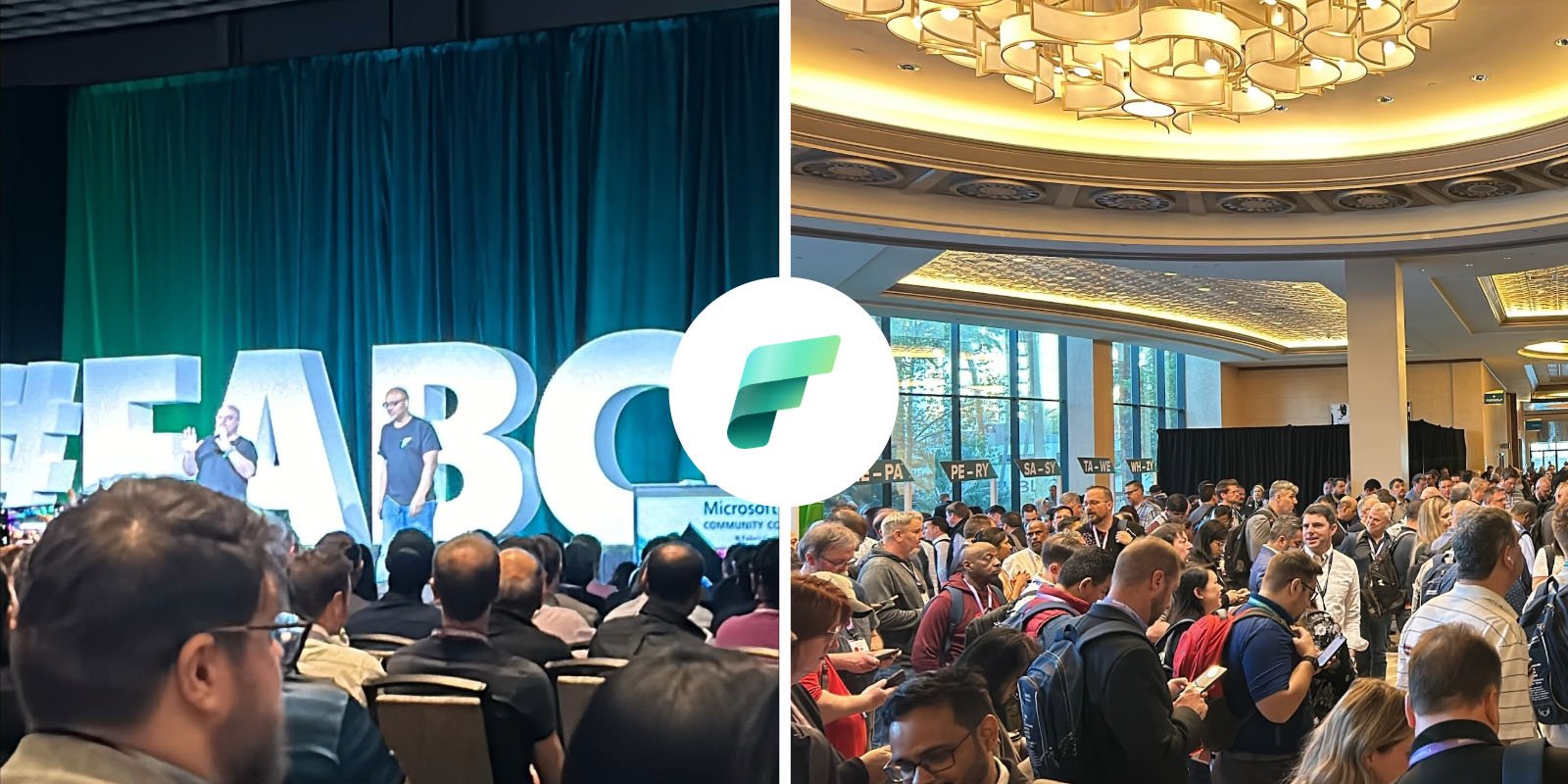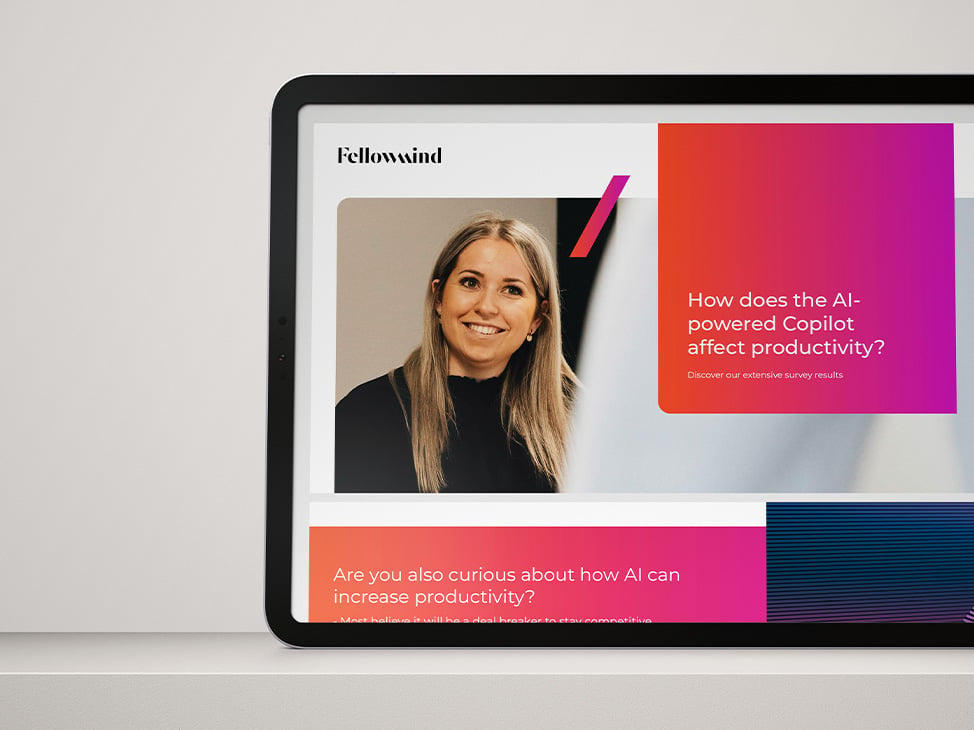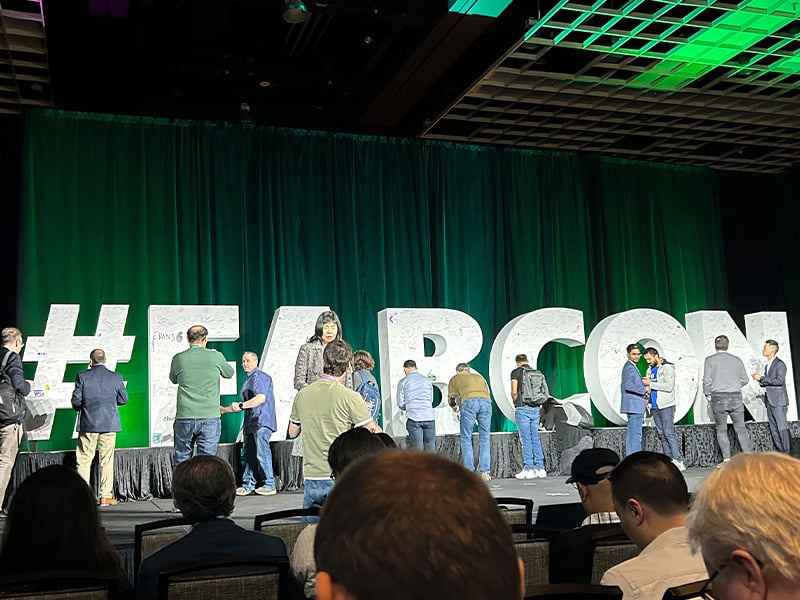News from the Fabric Community Conference
Our Microsoft MVP and Fabric expert, Brian, shares his impressions and lists new features coming to Microsoft Fabric, which were announced during this week’s first annual Microsoft Fabric Community Conference in Las Vegas.

This week has been an exciting one, as Microsoft hosted its first annual Fabric Community Conference in Las Vegas. It’s a massive three-day event where Microsoft has handpicked experts from around the globe to attend and share their knowledge around topics like data movement to AI and business intelligence.
Our Microsoft MVP and Fabric expert, Brian Bønk Rueløkke, was invited to host sessions at the conference and has given us an exclusive first-hand look into the experience and lists the new features coming to Microsoft Fabric in this blog post.
An impressive start to the conference
We are at the opening keynote in Las Vegas, the city that never sleeps, for the first Fabric Community Conference. All 4.000 attendees are walking in to find a seat in the grand ballroom of the MGM Grand Hotel.
The stage is set with small videos from Microsoft showing clips of community members speaking about their work in the community.
On the stage, we see a gigantic white “#FABCON” logo with two screens on each side of the stage for everyone to follow along in the huge ballroom.
The two guys from Guy In A Cube enter the stage for a short “Yo!” and start the keynote – they introduce us to the keynote and quickly hand over the stage to Arun Ulag, the Corporate Vice President of Azure Data.
The videos are now changing to an AI-based introduction with the theme of “Human by design.”
From the office in Denmark, I got a message that a new element in the Fabric Admin settings named “Users can create and use Mirrored items (preview)” has been added. We don’t know what that gives us yet—perhaps we will see later during this keynote.
Arun starts by discussing the Azure ecosystem, the number of users active on the Fabric platform, and which Microsoft partners have helped with the implementation.
The next slide shows us all the Fabric Featured partners—and lo and behold, we see the Fellowmind logo on the slide. These Fabric Featured Partners are key stakeholders in Fabric's success with clients all over the world. This is a huge achievement for Fellowmind.
Now, the stage is taken by Wangui McKelvey; she talks about the marketing around Fabric and the success stories.
Not in this keynote, but for your information, then Fellowmind has a customer success story with NIRAS in Denmark. That case has raised awareness from the global Microsoft organization and management.
Amir Netz enters the stage and talks about Fabric's success from day one after release and GA.
We now see a new setup of the standard slide of Fabric with all the services but with the Copilot icon and “AI” text just above the OneLake. I’m curious what that means.
New features to Microsoft Fabric
A small intermezzo from Patric LeBlanc and Adam Saxton from Guy in a Cube – a small demo video is shown on how easy it is to build a lakehouse and ingest data with a pipeline from a source. They now announce, “Now we will start showing new features.”
Quickly we get “Folders in Fabric” as a new feature in preview!
With folders, the items in the Fabric workspace can now be organized in folders and folders inside folders to give a more structured overview of the items in each workspace.
We also get “Task flows” in preview! Task flows in Fabric is a logical abstraction on top of your items in the workspace. The task flows groups and categorizes the items in logical groupings. Each item can then be drag’n’dropped into each group. If you need a stepstone to get started, you can also find templates with common architectures. Note that the Task Flow feature does not change anything in the items – it is only a logical grouping of elements.
We also get new Fabric elements around CI/CD capabilities. Pipelines, Data Warehouses, Spark Job Definition, and Spark environments are now supported for Git integration. Along with a new branch feature directly in Fabric, it is now possible to work with branches and create new workspaces based on this work without having to go to Azure DevOps.
VNET (Virtual private network) in Fabric goes GA today! The ability to add a VNET to the Fabric capacity is now GA and available for everyone to work with and configure.
Incremental refresh in DataFlows Gen 2! We can now configure incremental refresh in the DataFlows Gen 2 service in Fabric, a long-wished feature from the former Dataflows functionality (the non-gen2). It is very easy to configure; just point to the data fields you want to have incremental refresh on, and Fabric does the rest.
Accessing on-premise data via Pipelines in preview! The ability to work with data from an on-premise data source is now available. No matter if you use the Power BI gateway or the on-premise gateway, you can now read data from this source by using the copy activity in the Pipelines service inside Fabric.
Fastcopy in Pipelines and Dataflows Gen 2! A new fastcopy feature that uses more computing with faster execution is now available. We see a demo that loads GBs of data from a source and compares it with and without the fastcopy feature. We see a performance gain of around 35% when using the fastcopy feature. Around the cost, as it is executed faster with more computing, the cost is less or the same as without the feature.
Semantic model refresh activity in Pipelines available! We also get a new activity to refresh a Semantic Model in Fabric when executing Pipelines. Prior to this release, we needed to call an API to refresh the model and could not handle the functionality easily. With this addition, it is just a matter of configuring the activity and pointing it to a Semantic Model.
The new things keep on streaming from the stage.
We also get new shortcut features! Shortcuts to Dataverse and Amazon S3 (inkl on-prem data sources based on S3 functionality) and cross-tenant shortcuts. With the last feature, it is now possible to share data through a shortcut across tenants to external users. It is as easy as configuring a share in OneDrive. The receiver gets a link to click on, and the magic happens.
OneLake Data Access roles! Now we can configure security and access to folders in the OneLake structure. Either security groups or individuals can be added with different access to folders in the OneLake. With inheritance downwards in the structure, you only need to configure it on one level, and the security propagates to sub-elements in the structure.
Schema support in Lakehouse! We can now configure schemas in the Lakehouse service in Fabric. With drag’n’drop functionality, it is a matter of creating the schema and dragging the needed tables to the desired schema. All services accessing the LakeHouse will see the new structure. You can, of course, create the tables with the schema directly.
New open Notebook feature in Warehouse and TSQL support in Notebooks! A new button now opens a new Notebook and with TSQL language selected. We can now use TSQL language directly in the Notebook to load, manipulate, and clean our data on its way to the data platform. On a private note, there is now no longer an excuse not to use Notebooks for data loads…
Debugging notebooks and direct collaboration in the web ui! We can now debug the Notebook development directly on the web UI. A new window will open, and you will get a VC Code UI to use for debugging. It has features like breakpoints, inspectors, and everything else you would expect from the VS Code experience. We also have the possibility of inviting a colleague to help with a Notebook from a new prompt (not Copilot). Just write the name or email address, and a link will be sent for easy access so you can collaborate on the Notebook and get things done.
Autotune of Spark jobs! The underlying Spark engine now automatically tunes the execution of the Spark jobs (notebooks) without the end user needing to do anything. Over time the execution of the job will be faster and faster.
Database mirroring in Fabric! Operational Azure SQL databases can now be mirrored into the Fabric workspace with zero-ETL configuration. All data will be copied to the Fabric workspace in near real-time. It is a matter of configuring the data access, and Fabric takes care of the rest. No more Pipelines and copy activity, configuring incremental refresh, and maintaining the load. Everything is done for you. And the best part, the copy of the data from the operational databases is not charged on the storage cost in Fabric. Free storage.
Supported databases for now are Azure SQL, Cosmos DB, and Snowflake.
New visuals in Power BI! Stacked area chart and smoothing of the lines in the area chart. The matrix visual can now repeat headers in the column groupings. And auto create mobile layout in Power BI – just click the button in Power BI and the Mobile layout is now done for you.
Semantic Models in Power BI Desktop! We can now edit the semantic models in Power BI Desktop. You can choose to connect or edit the semantic model when opening it in Power BI Desktop. The semantic model is still stored in Fabric, and the Power BI desktop application synchronizes the changes live with the service.
Semantic Models saved in OneLake! The semantic models are now saved directly in OneLake so that other services can access all the elements from the model. Calculations, metrics, new columns, calculated tables, etc., are now available for other services to query and use. This is also supported by TSQL. There is no longer the need to recreate the joins and calculations when accessing the data through TSQL.
New Copilot services in Fabric! We now have Copilot in Notebook, which can help with code development, adding comments, and deciphering the current code for functionality and debugging.
Copilot for Power BI consumers: The end user in Power BI can now ask questions about the report content.
Custom Copilot in Fabric! You can now create a local self-build Copilot in Fabric based on your own data. It is just a matter of adding the entities (e.g., Tables) from OneLake, and the Fabric service takes care of the rest. This could potentially remove some Power BI reports, and the end user can “chat” with the data and get the needed answers directly in a chat prompt.
That was the new release from the keynote here in Las Vegas for the Microsoft Fabric Community Conference.
We also get next year’s date for the conference—mark your calendars for April 1 to April 3, 2025, for the next Fabric Community Conference.
I hope you reached the bottom of this blog post and that you got some insights into the new releases to Fabric—some of them are in preview, and some are to come. Stay tuned for more exciting updates!






